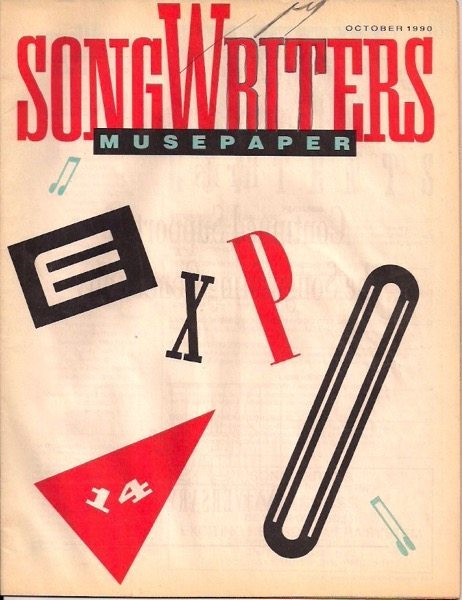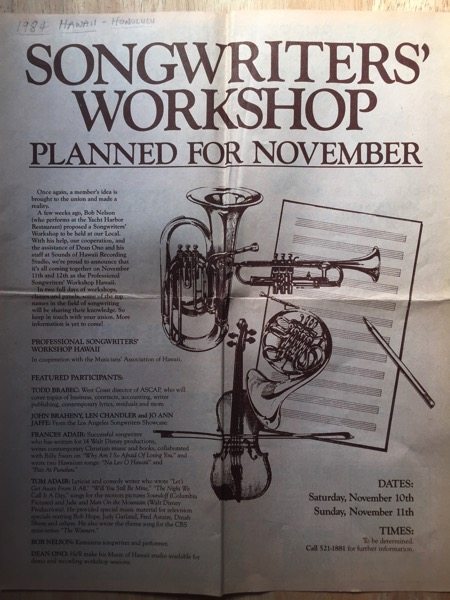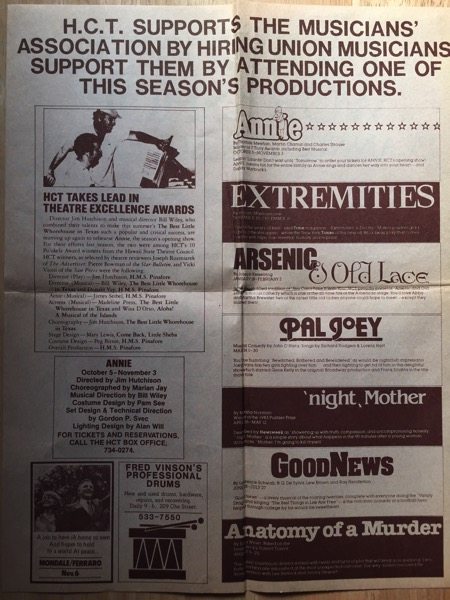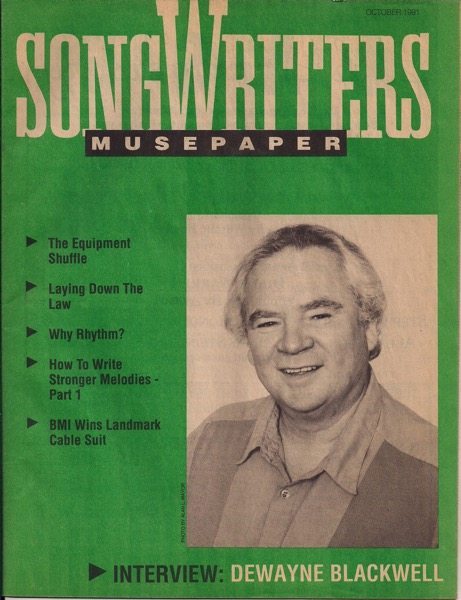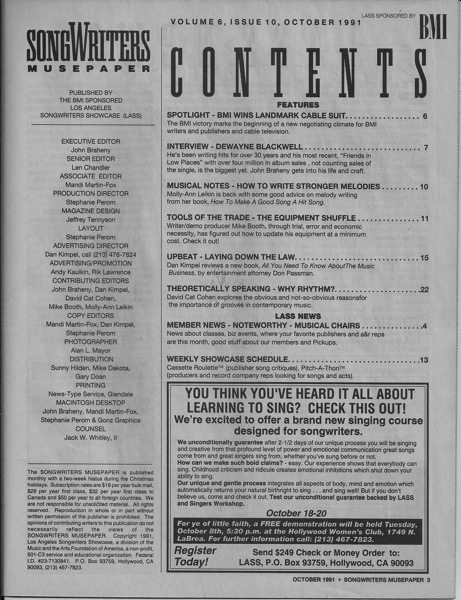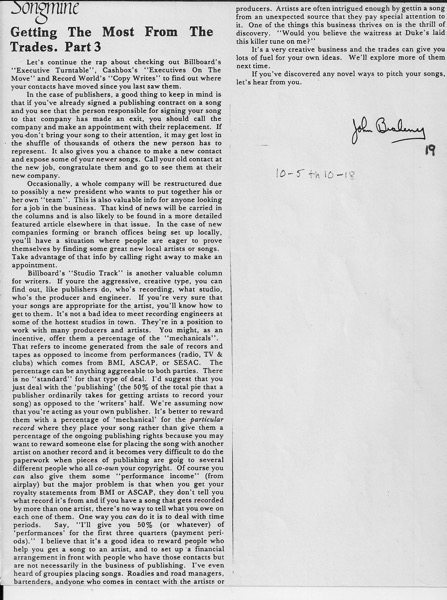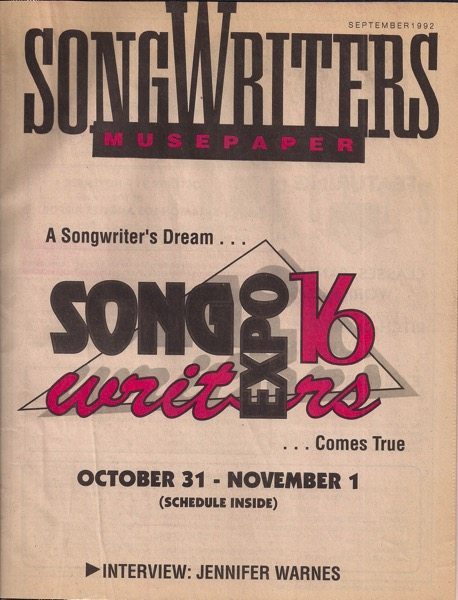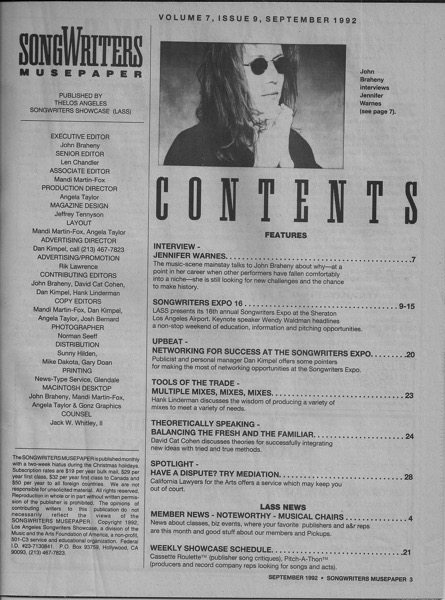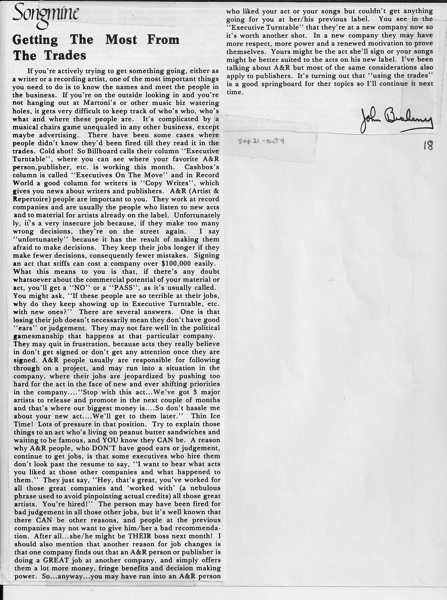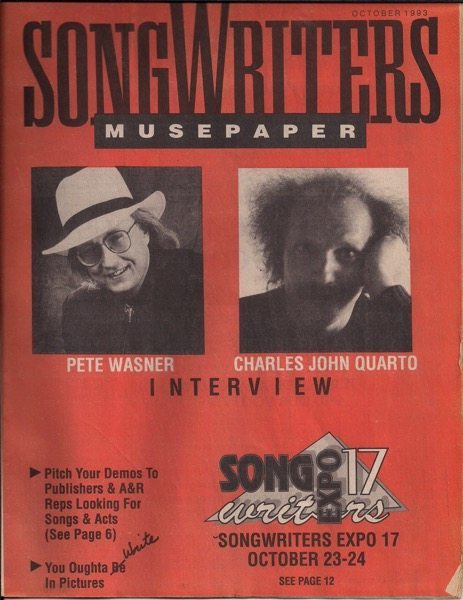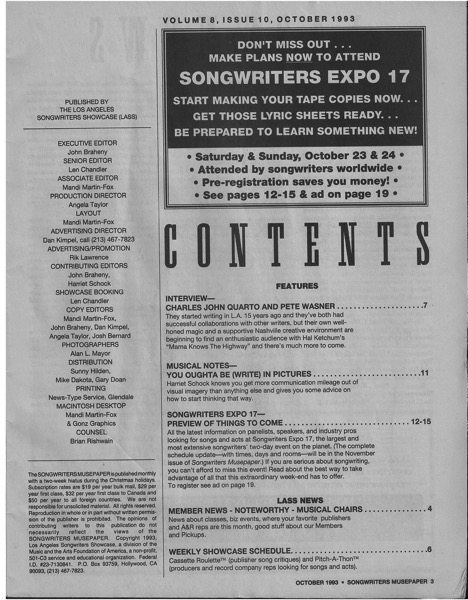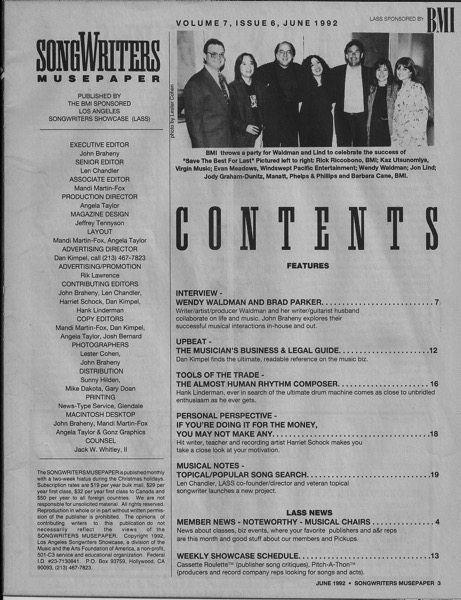A John Braheny Songmine column from the archives…
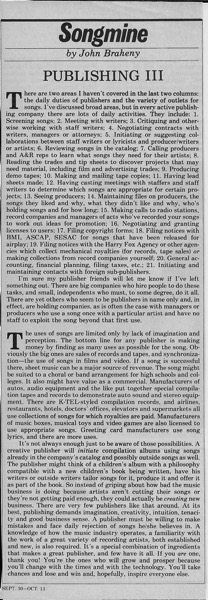
Accession Number: C000000137-005 Document/Digital File, “Publishing III ” by John Braheny, OCR converted text under same Accession Number
(Digitally converted text. Some errors may occur)
Songmine: PUBLISHING III
by John Braheny
There are two areas I haven’t covered in the last two columns: the daily duties of publishers and the variety of outlets for songs. I’ve discussed broad areas, but in every active publish-ing company there are lots of daily activities. They include: 1. Screening songs; 2. Meeting with writers; 3. Critiquing and other-wise working with staff writers; 4. Negotiating contracts with writers, managers or attorneys; 5. Initiating or suggesting col-laborations between staff writers or lyricists and producer/writers or artists; 6. Reviewing songs in the catalog; 7. Calling producers and A&R reps to learn what songs they need for their artists; 8. Reading the trades and tip sheets to discover projects that may need material, including film and advertising trades; 9. Producing demo tapes; 10. Making and mailing tape copies; 11. Having lead sheets made; 12. Having casting meetings with staffers and staff writers to determine which songs are appropriate for certain pro-jects; 13. Seeing producers; 14. Maintaining files on producers, the songs they liked and why, what they didn’t like and why, who’s holding songs and for how long; 15. Making calls to radio stations, record companies and managers of acts who’ve recorded your songs to work out ideas for promotion; 16. Negotiating and granting licenses to users; 17. Filing copyright forms; 18. Filing notices with BMI, ASCAP, SESAC for songs that have been released for airplay; 19. Filing notices with the Harry Fox Agency or other agen-cies which collect mechanical royalties (for records, tape sales) or making collections from record companies yourself; 20. General ac-counting, financial planning, filing taxes, etc.; 21. Initiating and maintaining contacts with foreign sub-publishers.
I’m sure my publisher friends will let me know if I’ve left something out. There are big companies who hire people to do these tasks, and small, independents who must, to some degree, do it all. There are yet others who seem to be publishers in name only and, in effect, are holding companies, as is often the case with managers or producers who use a song once with a particular artist and have no staff to exploit the song beyond that first use.
The uses of songs are limited only by lack of imagination and perception. The bottom line for any publisher is making money by finding as many uses as possible for the song. Ob-viously the big ones are sales of records and tapes, and synchroniza-tion—the use of songs in films and video. If a song is successful there, sheet music can be a major source of revenue. The song might be suited to a choral or band arrangement for high schools and col-leges. It also might have value as a commercial. Manufacturers of autos, audio equipment and the like put together special compila-tion tapes and records to demonstrate auto sound and stereo equip-ment. There are K-TEL-styled compilation records, and airlines, restaurants, hotels, doctors’ offices, elevators and supermarkets all use collections of songs for which royalties are paid. Manufacturers of music boxes, musical toys and video games are also licensed to use appropriate songs. Greeting card manufacturers use song lyrics, and there are more uses.
It’s not always enough just to be aware of those possibilities. A creative publisher will initiate compilation albums using songs already in the company’s catalog and possibly outside songs as well. The publisher might think of a children’s album with a philosophy compatible with a new children’s book being written, have his writers or outside writers tailor songs for it, produce it and offer it as part of the book. So instead of griping about how bad the music business is doing because artists aren’t cutting their songs or they’re not getting paid enough, they could actually be creating new business. There are very few publishers like that around. At its best, publishing demands imagination, creativity, intuition, tenaci-ty and good business sense. A publisher must be willing to make mistakes and face daily rejection of songs he/she believes in. A knowledge of how the music industry operates, a familiarity with the work of a great variety of recording artists, both established and new, is also required. It’s a special combination of ingredients that makes a great publisher, and few have it all. If you are one, thank you! You’re the ones who will grow and prosper because you’ll change with the times and with the technology. You’ll take chances and lose and win and, hopefully, inspire everyone else.
SEPT. 30-OCT. 13
Previously in the Songmine Collection:
About Songmine and Music Connection Magazine:
John Braheny met Eric Bettelli and Michael Dolan right before they were going to publish Music Connection magazine. Eric and Michael wanted to get their publication out to as many songwriters as they could. They had already heard of the LA Songwriters Showcase, and of John and his partner, Len Chandler. John’s goal was to advertise the schedule of guest speakers and performers at the weekly Showcase… so they made a deal.
They published John’s Songmine column (he had never before written a magazine article!) in their very first edition, in November 1977. Trading out the column for advertising, this arrangement continued for many years. Plus, Eric and Michael came to the Showcase each week and distributed free copies to the songwriters!
Those articles became so popular that (book agent and editor) Ronny Schiff offered John’s articles to F&W Media, where they became the backbone of John’s textbook, The Craft and Business of Songwriting. As a follow-up, Dan Kimpel (author, songwriter, teacher), who had also worked at LASS, took on the Songwriting column at Music Connection magazine which continues to this day! You can subscribe to get either hard copies or online.
“Feedback: Why some publishers won’t give it” by John Braheny
